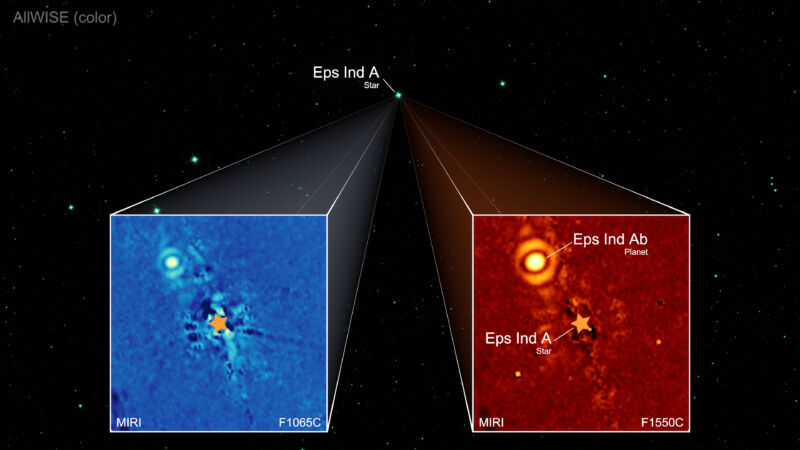
Enlarge / Image of Epsilon Indi A at two wavelengths, with the position of its host star indicated by an asterisk. (credit: T. Müller (MPIA/HdA), E. Matthews (MPIA))
We have a couple of techniques that allow us to infer the presence of an exoplanet based on its effects on the light coming from its host star. But there's an alternative approach that sometimes works: image them directly. It's much more limited, since the planet has to be pretty big and orbiting far away enough from its star to avoid having light coming from the planet swamped by the far more intense starlight.
Still, it has been done. Massive exoplanets have been captured relatively shortly after their formation, when the heat generated by the collapse of material into the planet causes them to glow in the infrared. But the Webb telescope is far more sensitive than any infrared observatory we've ever built, and it has managed to image a relatively nearby exoplanet that's roughly as old as the ones in our Solar System.
Looking directly at a planet
What do you need to directly image a planet that's orbiting a star light-years away? The first thing is a bit of hardware called a coronagraph attached to your telescope. This is responsible for blocking the light from the star the planet is orbiting; without it, that light will swamp any other sources in the exosolar system. Even with a good coronagraph, you need the planets to be orbiting at a significant distance from the star so that they're cleanly separated from the signal being blocked by the coronagraph.
Read 9 remaining paragraphs | Comments
Ars Technica - All contentContinue reading/original-link]




